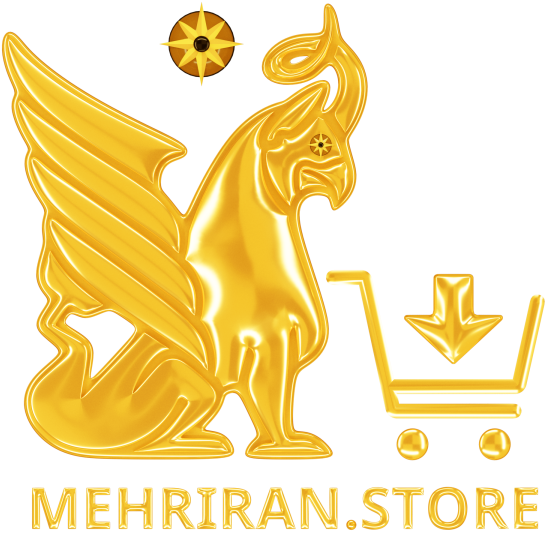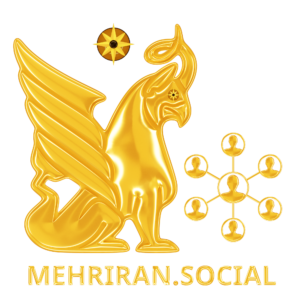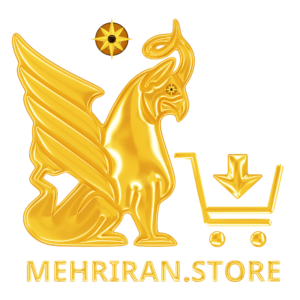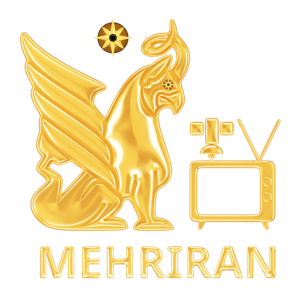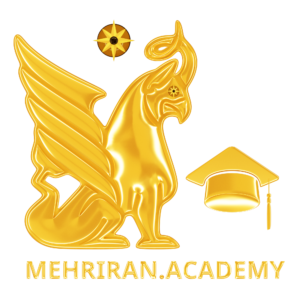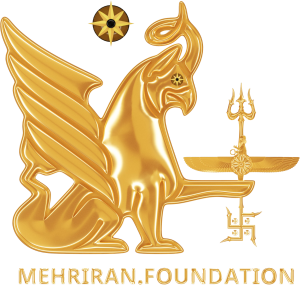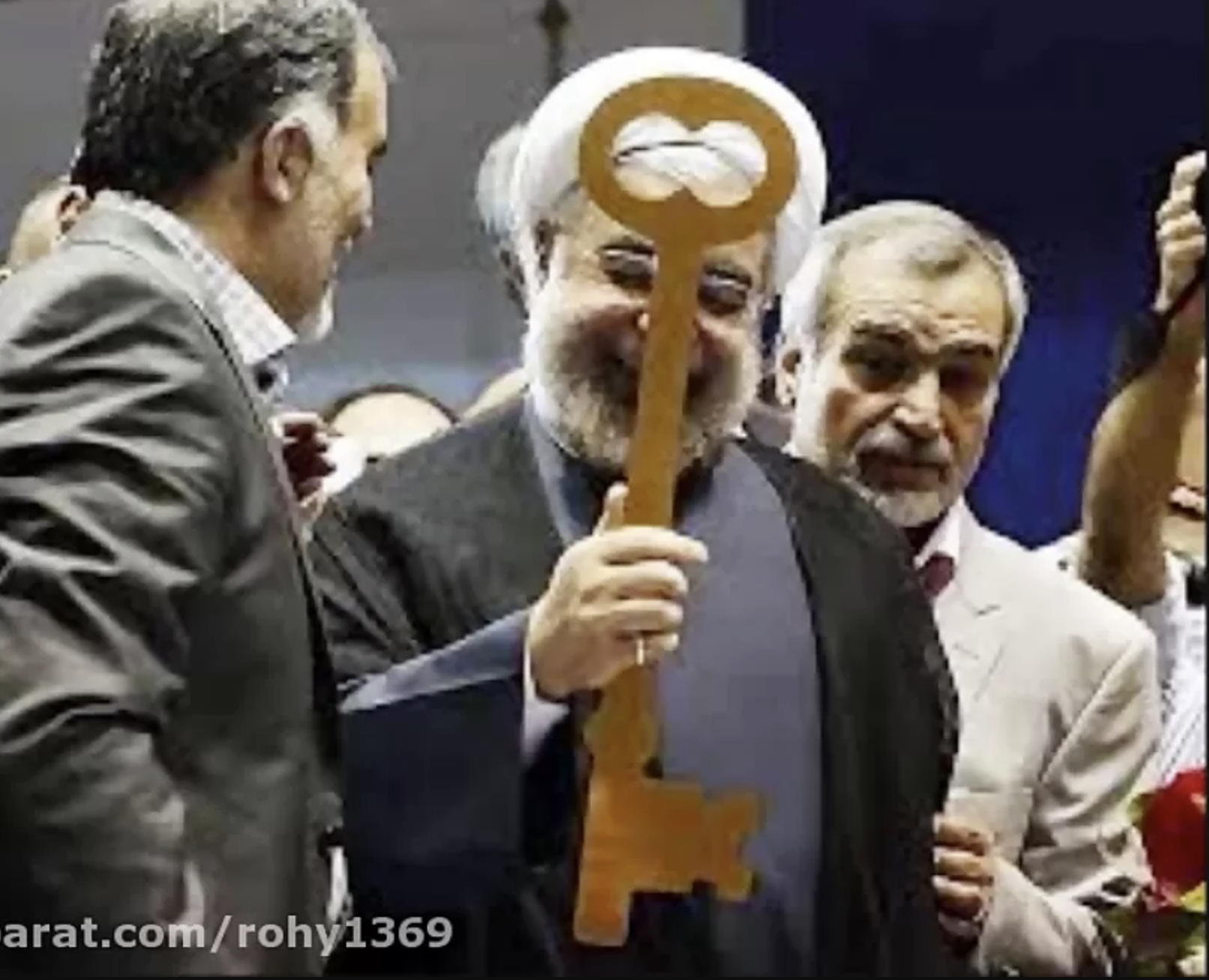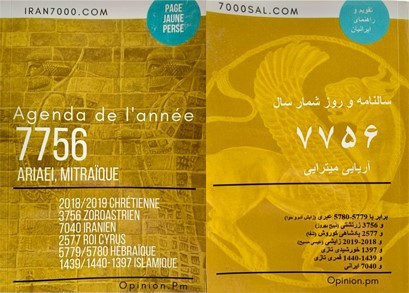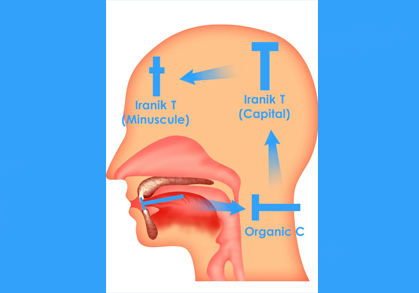NOTICE: If you are not viewing this site in Persian, the content on this page may have been automatically translated using Google Translate and may have some inconsistencies.
NOTICE: If you are not viewing this site in Persian, the content on this page may have been automatically translated using Google Translate and may have some inconsistencies. Dismiss
Menu
Saturday, January 11, 2020
the writer: Dr. Reza Hazli
Iran is an ancient country with its own complexity. The country has a very complex structure that has been shaped by a more than 7,000-year-old civilizational process and a historical process that spans nearly 37 centuries. The modern nation-state of Iran in the beginning of the 20th century was formed from the heart of the Iranian monarchy, which has existed for at least three thousand seven hundred years and since the time of Iranovich (the Iranian archaeological domain of BMIC) and the arrival of Iranian families including the Caspian to the Middle East. The Ancient Iranian Empire for thousands of years was one of the two superpowers of the ancient world, along with Greece and then Rome. According to the German philosopher Hegel, the Persian Empire is the first empire in human history. The empire has had the largest and longest war in history for nearly 1,000 years with Greece and Rome, and its influence and contribution to science, technology, culture, religion, literature, military and management sciences of the ancient world is brilliant. The process of modernization of Iran went to power under Reza Shah, but unfortunately during Pahlavi II, with the implementation of the Brzezinski Green Belt Plan, it was severely disrupted, and this disruption eventually led to the deviation of the Iranian intellectuals’ protest and revolutionary movement for freedom and democracy, and led Dr. Bakhtiar’s progressive and revolutionary government to the tragedy of the Islamic Republic.
Iran is a country that is of particular importance in the geopolitics of the Middle East and the world. Iran is the most important and powerful pillar of “Iranian civilization” and for other countries and territories of this civilization, including but not limited to: Tajikistan, Afghanistan, Kurdistan (in Iraq, Turkey and Syria), Balochistan (Pakistan), Ossetia and Alanya (Caucasus), Talesh (Caucasus), Tajiks (Samarkand and Bukhara), and even Aran (Azerbaijan) and Armenia play a “fundamental” and “vital” role.
The collapse and weakening of Iran will be the collapse and weakening of all countries and territories of Iranian civilization and will provide the ground for intervention and war with regional and global powers in Iranian civilization. Therefore, in completing the half-finished process of the modern nation-state of Iran, which began since the time of Reza Shah, one should be very cautious and build the new structure of the country on a firm foundation that, if brick is placed incorrectly, the wall of Iran and Iranian civilization will be tilted to Soraya.
On the other hand, “Iran” is not a homogenous country and is made up of diverse ethnicities. Although all of these ethnic groups share the “Iranian culture” and are part of what they call “Nowruz Cultural Sphere” in Iranism, they also own their own “subculture”.
One of the most challenging issues of “modern Iran” is the fair distribution of state power and state divisions so that the two principles of “justice” for Iranian peoples and ethnicities and “the integrity of Iranian civilization” are considered here.
It should also be noted that “governmental power structures” differ from “political regimes” and that these structures are capable of adapting to different political regimes. Although the ideal “political regime” for Iran is an elective political regime (whether a republic or a chosen monarchy) and history has shown that the hereditary political regime (both a hereditary monarchy or a hereditary republic) is the poison of tyranny for Iran, here, only the “structures of state power” and “divisions” and not the “political regime.”
Governmental Power Structures and State Divisions in Political Science
Governance power structures in political science are briefly described in the table below. Two effective factors and two main factors in this division are “degree of concentration and decentralization” and “defining nation and nation”.
In order to better understand the structures of government, it is better to understand the two definitions of “province and local government” and “regional and regional government”.
Centralization and decentralization – In political science, there are five degrees of centralization and decentralization in the state’s power structures in political science, which include one-centralized unified governance, two decentralized integrated governance, three monolithic states with autonomous regions, four federal governments, five – confederate governments.
Ethnic and Nation Definition – Another important factor in the governance power structures of a country is the diversity of the people of that country, which on the basis of the principle of “social justice” should be considered the share of different peoples of a country in the distribution of power. The most important concept for the diversity of peoples of a country is the definition of “nation and nation” and their differences.
Folk
An ethnic group is an ethnic group that has its own “subculture” or “subculture”, although it has a lot in common with a “superculture” and a larger value system. Unlike “nation,” “ethnicity” does not have two characteristics of “territorial integrity” and “national sovereignty or Savorenti” and has not historically and for various strategic reasons in the historical process.
Nation
A nation (in one-handed nations) or a group of different ethnicities (in non-one-armed nations) that have two characteristics of “territorial integrity” and “national sovereignty or savorenti” are called “nations”.
Province and local government – Part of the divisions of the country that the Interior Ministry proposes to the Legislature based on cultural, subcultural, historical, social and political factors
They say the County. The people of a province can be made up of one ethnic group or from several tribes for geopolitical considerations. Provinces in centralized governments by the Governorate under the Ministry of Interior, and in decentralized governments by provincial and local governments or “local government”, which is directly part of the central government. They are governed. A “local government” or provincial government is a government that is in the span of a central government and not parallel to it. Such a government in Unified States (UNITARI) is a way to decentralize and implement social justice. “Local government” does not have “territorial integrity” and “national sovereignty” as opposed to “regional government” and is not considered an “independent nation-state”.
A region and regional government is a group of provinces that have cultural, ethnic, and historical factors in common. People in a region can also be ethnically diverse, but hegemony is usually with the same people. For example, in Iran, the provinces of Kurdistan, Kermanshah, Ilam, and parts of the provinces of West Azerbaijan and Hamedan and some other lands with Kurdish-speaking majority areas such as North Khorasan province and the land of some branches of the Afshar tribes together constitute the “Kurdistan region”. Regions in centralized and decentralized monolithic states do not have legal or political status. But in non-integrated states, such as federal and confederate governments, regions are actually sovereign nation-states and are subject to a “regional government” or “regal government” that has “territorial integrity” and “national sovereignty.” “Regional government” in non-unified governments (federal, confederal) has broad powers and, unlike “local government”, is parallel to and not during central government.
1)Unified structure (unitary) with centralized government – In short, in this structure, all political, executive, judicial and legislative power of the country is concentrated in the capital, and the provinces and regions (a series of provinces) do not have political, administrative, executive, judicial and legislative power. In this structure, the country has a nation and the diversity of ethnic groups is not recognized.
2) Unitary structure with decentralized governance – In this type of structure, the country has a nation, but diversity of ethnicities is recognized and on the basis of the principle of “social justice” they share in “state power”. Accordingly, although the main political power of the government, the executive, the Majnana, and the judiciary powers is in the capital, the provinces have a “local government” that is in length, not parallel to the “central government”. “Local government” includes “provincial government,” “provincial assembly” and “provincial courts,” which have limited responsibilities during and not parallel to “central government.” In local government, parts of provincial taxes are spent on those provinces themselves, in addition to the additional contributions of the central government. In local government, the “Governor” or “Provincial First Minister” is under the direct supervision of the central government and appointed by the central government, is a member of the central government and the ruling party of the country, and is not subordinate to the Interior Ministry. The Provincial First Minister selects the local government from the provincial faction of the ruling party of the country who are native to that province, although provincial legislatures are characterized by local elections and provincial court judges by local appointments. In such a structure, there is usually no provincial or regional party, but national parties have provincial and not regional factions. It should also be noted that in this type of government, “provinces” and not “regions or groups of provinces” will have political power. And every member of the assembly.
The national of the country shall be proportional to its population and shall have three permanent representatives in the Senate. Provincial factions of national parties should also have a fixed number of provincial members in which the population of the province is ineffective.
The judicial system of the country in this type of government will have three layers, with provincial courts being the starting layer and the general courts in the capital of its middle layer and the Supreme Court will be the highest layer, which will also be located in the capital.
Military and police forces in such a government would be universal and no local military or police or paramilitary force would be tolerated. The country’s intelligence and security services will operate centrally in the capital and under the supervision of the central government.
The official and educational and governmental language in Iran will be a language, which is Iranian or Dari, which is abbreviated and mistakenly called Farsi. However, there will be local and provincial Iranian language education alongside the official language in schools and universities.
Provincial and local governments in this type of government will not be allowed to hold an “independence referendum” either with or without the permission of the central government.
3) Integrated Structure (UNITARY) with Autonomous Regions In such a government that is a combination of “integrated structure” and “federal structure”, although the country is integrated, the legal and political situation differs in parts of the country and those parts or regions that can be a set of provinces, a parallel “nation-state” forms a “main nation-state” that has two characteristics of “nation-states”, namely “territorial integrity” and “national sovereignty”. This type of governance can have regional parties that specify the structure of the executive, judicial and legislative powers in that autonomous region. Nationwide military, security and intelligence forces, but law enforcement can be regional in the autonomous region. The government of the autonomous regions shall have the right to hold an “independence referendum” with the permission of the central government. The regional language along with the national official language in the autonomous region can be used as a state and educational language. States with autonomous regions are usually among the most volatile, and the parallel nation-state will sooner or later be separated from the original nation-state or part of the neighboring country will become more powerful. An obvious example is the “autonomous republic of Crimea” in Ukraine, which eventually broke away from the unified structure of Ukraine and joined the Russian Federation.
The most important thing to be said above all about the “federal structure” is that it is designed to unify a few sovereign states and build a new one. The union of the German independent principalities or the independent sheikhdoms of the United Arab Emirates was realized in the form of a federal system. Thus, in countries that have always existed throughout history, there is talk of “federalism”, a whistling of the trumpet and will actually divide the country not as an ally but as an ally. The most important examples to consider are the Tsarist Russian Empire, which was a unified country and all were divided by the implementation of popular federalism and the formation of 15 republics in the first historical crisis, or the second is Yugoslavia, which was also a unified country with ethnic diversity, which, with the implementation of ethnic federalism, also disintegrated and collapsed at the first historical opportunity. It should also be noted that
The state structure of “federalism” in countries that have tribal names over their provinces actually becomes “confederalism,” which is not a thing because it is a weak cooperation of a few fully independent countries and a transient and unstable form of governance.
But “federalism” itself is in fact the union of several independent “nation-states” and the formation of a “union.” In this type of government, whether in countries with one ethnic group or in countries with multiple ethnic groups, in practice independent nation-states with independent executive, legislative, and judicial powers parallel to and not during central government. In the federal structure, regional governments are a state of a set of provinces, and regional governments have “territorial integrity” and “national sovereignty” as opposed to local governments, which are parallel to and not during “territorial integrity” and “sovereign right of central government”. Alliances with the central government are “voluntary alliances” in the federal structure, and regional regions and governments will have the right to hold an “independence referendum” with the ceremonial permission of the “central government.” Political parties in “single-ethnic federalism” are usually national and regional in “bi-ethnic or multi-ethnic federalism”.
Military forces in this type of government can be national, but they are regional law enforcement forces. Intelligence and security agencies are not centralised and have some form of autonomy in the regions.
The official language of government, education, and government in “federalism” is typically a single ethnic one, as in Germany, or at most two languages in a biethnic federalism such as Canada. Usually if there are too many people, the federal structure must either be converted into confederation or integrated structure so that the central government can emerge from chaos and be able to function.
It is also very important to note that “federalism” has nothing to do with “democracy,” and that many countries that are now federal, such as the UAE and Pakistan, or were in the past, such as Yugoslavia and the Soviet Union, were not democratic at all, and on the contrary, many countries that are not federal, such as France, have democracies.
In confederalism, it should be noted first and foremost that this structure is “transient” and extremely unstable. For example, the confederalism of the 13 British colonies in the United States went to federalism and could not survive. Another example is the European Union, which is weak and has two options, either to move towards federalism with the adoption of a common European constitution, which failed to pass in France, or to collapse as the signs of which are marked by Brexit. Another example of confederalism in the Middle East region is the Republic of Iraq. The country, which consists of two Kurdish and Arab nation-states, is extremely unstable and has no way of dividing or becoming more centralised in the future.
Confederalism is the gathering of a number of independent nation-states, which come together temporarily, to pass a critical transition period, with limited collaborators among them. Confederalism is a structurally unstable structure and after a limited time there will be two options: Either the Confederate governments must come closer together and create the federal structure, or they must move away from each other and each state will go its own way and become independent. The lack of managerial centralization in the central government and symbolism of this government will weaken it infinitely and will prevent it from carrying out major political, cultural, economic and social projects.
In confederalism, “nation-states” are completely independent and have “territorial integrity” and “national sovereignty.” These nation-states exist neither during nor even parallel to the central government, but each can take a completely opposite path. Regional parties are even more powerful than national parties, and each region and a set of provinces that will have their own nation-state will have their own executive, legislative and judicial branches, and even have their own military, police, security and intelligence forces. In this structure, and especially its disparate multiethnic variety, there will be several official languages, each of which will be the official language of the state and education in its region. The Confederate nation-states, although de facto independent, can hold an “independence referendum” at any moment, even without the permission of the weak central government, and if possible, “declare independence.” The best example is Brexit, which was the declaration of British independence from the Confederation of the European Union. Or the referendum on the independence of Iraqi Kurdistan, which was not implemented only due to the economic blockade of the mountainous and closed Kurdish land, although de facto and de facto “Kurdistan Region” in northern Iraq is an independent nation-state.
A very important point to note is that “ethnic federalism” is actually “confederalism” and is a very unstable state in the structures of government.
Ideal Option for Iran
Anyone who has two characteristics of “Iran Friendship” and “Seeking Justice” and who is aware of the great dangers that lurk in the troubled Middle East region of Iran and its people, and who knows the types of government power structures and divisions of the country, and is deeply familiar with the culture and history of Iran and its people, will undoubtedly choose the second of the five options above for Iran’s future. It was a “unified but decentralized” government that, on the one hand, with its “integrity,” which is the legal and political system of UNITARI, would recognize the stability, tranquility, territorial integrity, and historical sovereignty of Iran, and on the other hand, by its decentralization, it would provide “social justice” and the right to share the peoples of the united nation of Iran in its destiny and the governance of the country.
Therefore, “decentralized monolithic government” will be the ideal government for Iranists and nationalists, and this is why I have mentioned it in the manifesto of the Iranzamin School (Iranzamin think tank) or modern nationalism from the civilizational point of view.
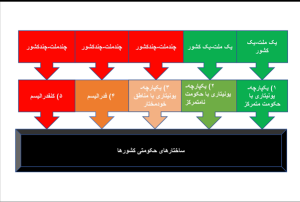
Be the first to write a review
Post Views::
61

- +1 (415) 685 8888
- info@mehriran.tv
-
St. Kilda Road towers level 1, 1 Queens Road Melbourne,
Victoria 3004 Australia
Copyright © MehriranTV 2012 - 2024
